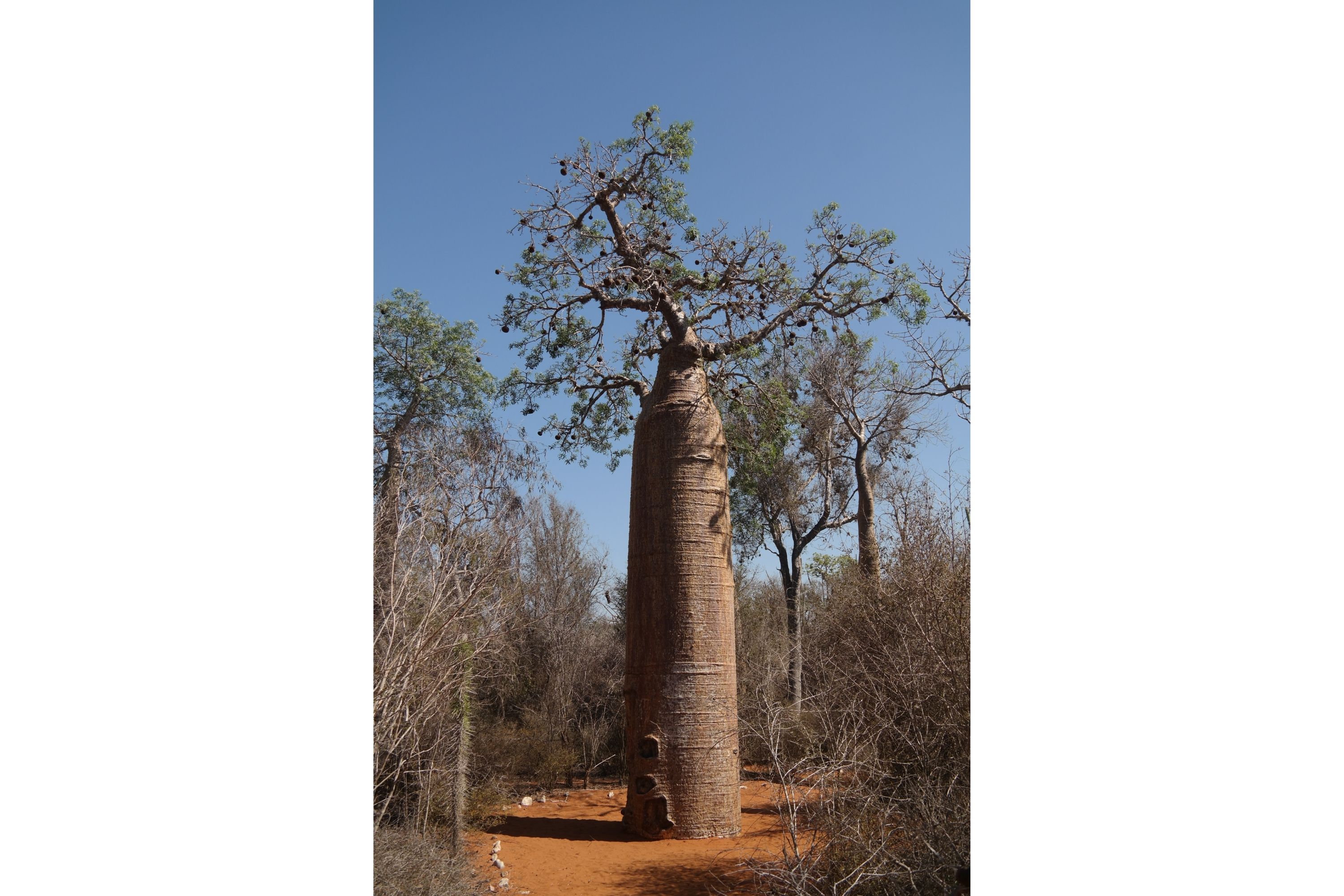Grandidier's baobab
(Adansonia grandidieri)

Description
Adansonia grandidieri is the biggest and most famous of Madagascar's six species of baobabs. It is sometimes known as Grandidier's baobab or giant baobab. In French it is called Baobab malgache. The local name is renala or reniala (Malagasy for "mother of the forest"). This tree is endemic to the island of Madagascar, where it is an endangered species threatened by the encroachment of agricultural land. This is the tree found at the Avenue of the Baobabs. Grandidier's baobabs have massive, cylindrical, thick trunks, up to three meters across, covered with smooth, reddish-grey bark. They can reach 25 to 30 m (82 to 98 ft) in height. The crown is flat-topped, with horizontal main branches. Leaves are palmately compound, typically with 9 to 11 leaflets. This is the only species of baobab with leaflets that are blueish-green and that are densely covered with star-shaped hairs. Flowering occurs during the dry season, from May to August, before leaves appear. Buds are erect, rounded and dark brown. The flowers are made up of 5 (sometimes 3) calyx lobes that are bent back and twisted at the base of the flower. The lobes are fused at the base forming an open cup about 1 cm deep. Petals are white, aging to yellow, up to 20 mm long and about 5 times as long as broad. The flowers have a white central tube (staminal tube) that is up to 16 mm long and is made up of fused stalks of stamens (filaments). 600-700 unfused filaments up to 6.5 cm long spread out from the top of the staminal tube. A densely hairy ovary is enclosed in the staminal tube, and a long style tipped with a white or pinkish stigma emerges from the filaments. The fruits are large, dry and rounded to ovoid. They have a hard shell 2-4.5 mm thick and are covered with dense reddish-brown hairs. They contain large (12-20 mm long) kidney-shaped seeds within an edible pulp. This baobab occurs in south-western Madagascar, between Lac Ihotry, (near Morombe), and Bereboka. Grandidier's baobab used to inhabit dry, deciduous forest, especially near seasonal rivers or lakes. However, today it is mainly found in open, agricultural land or degraded scrubland.
Taxonomic tree:







